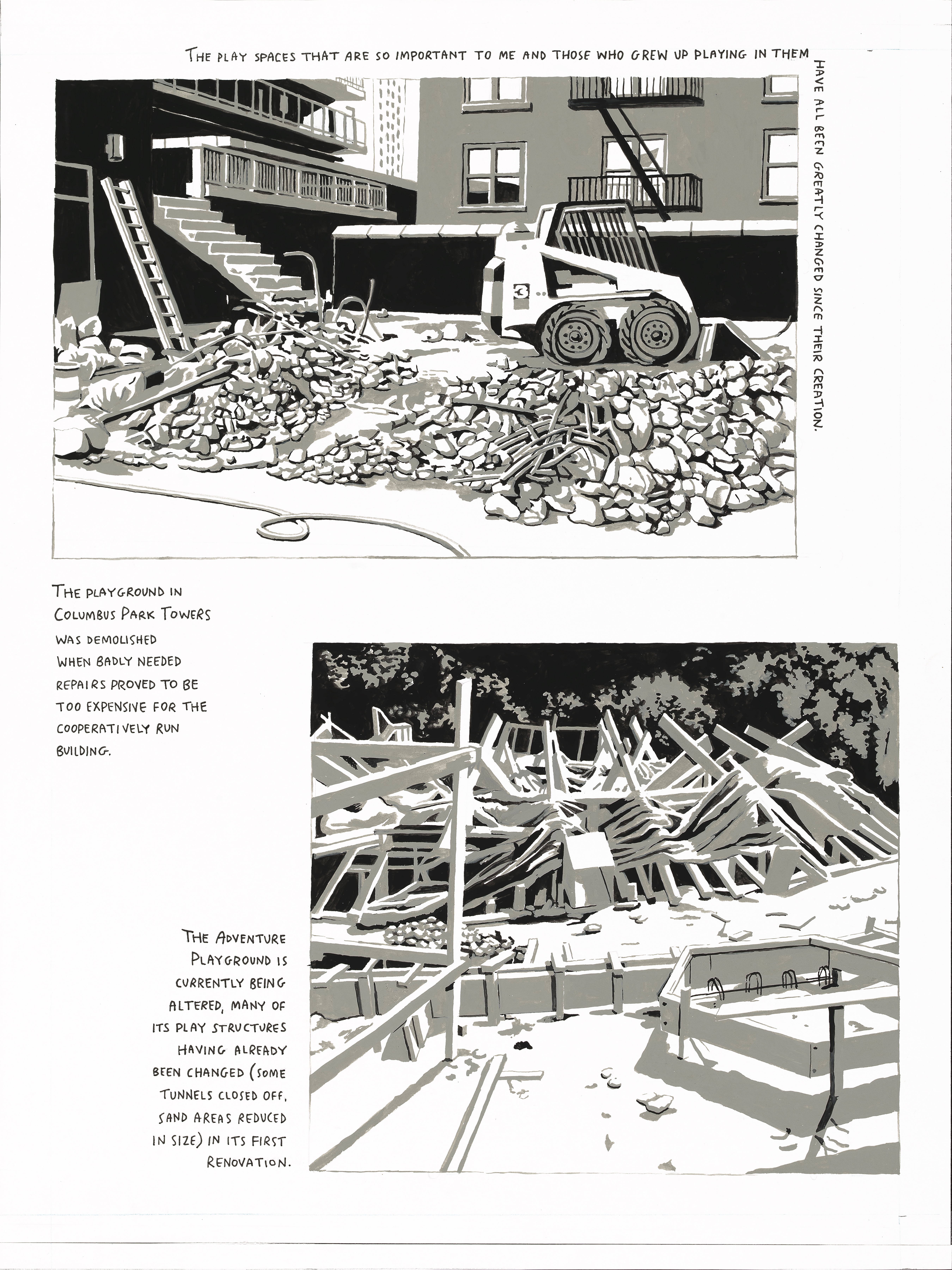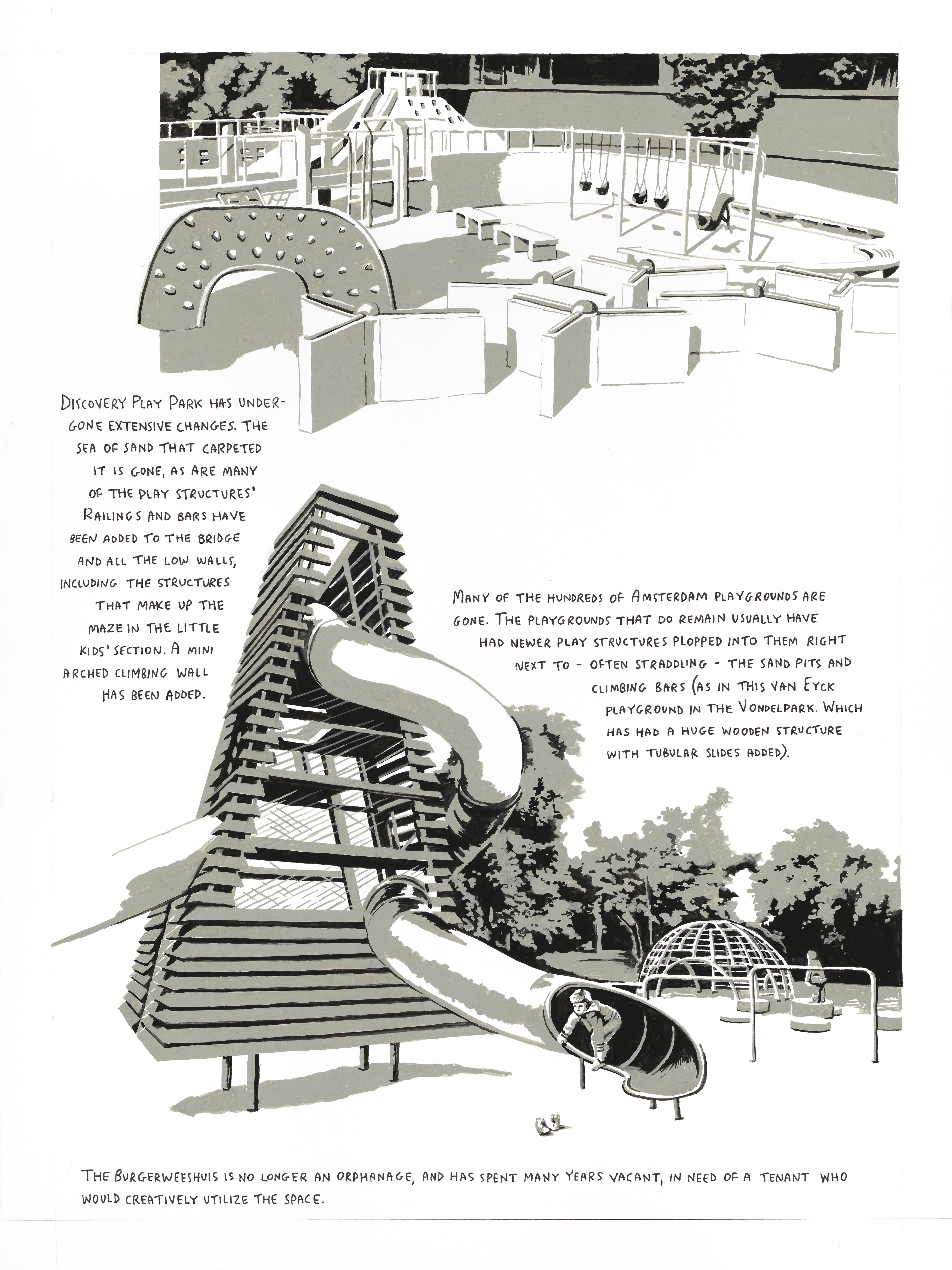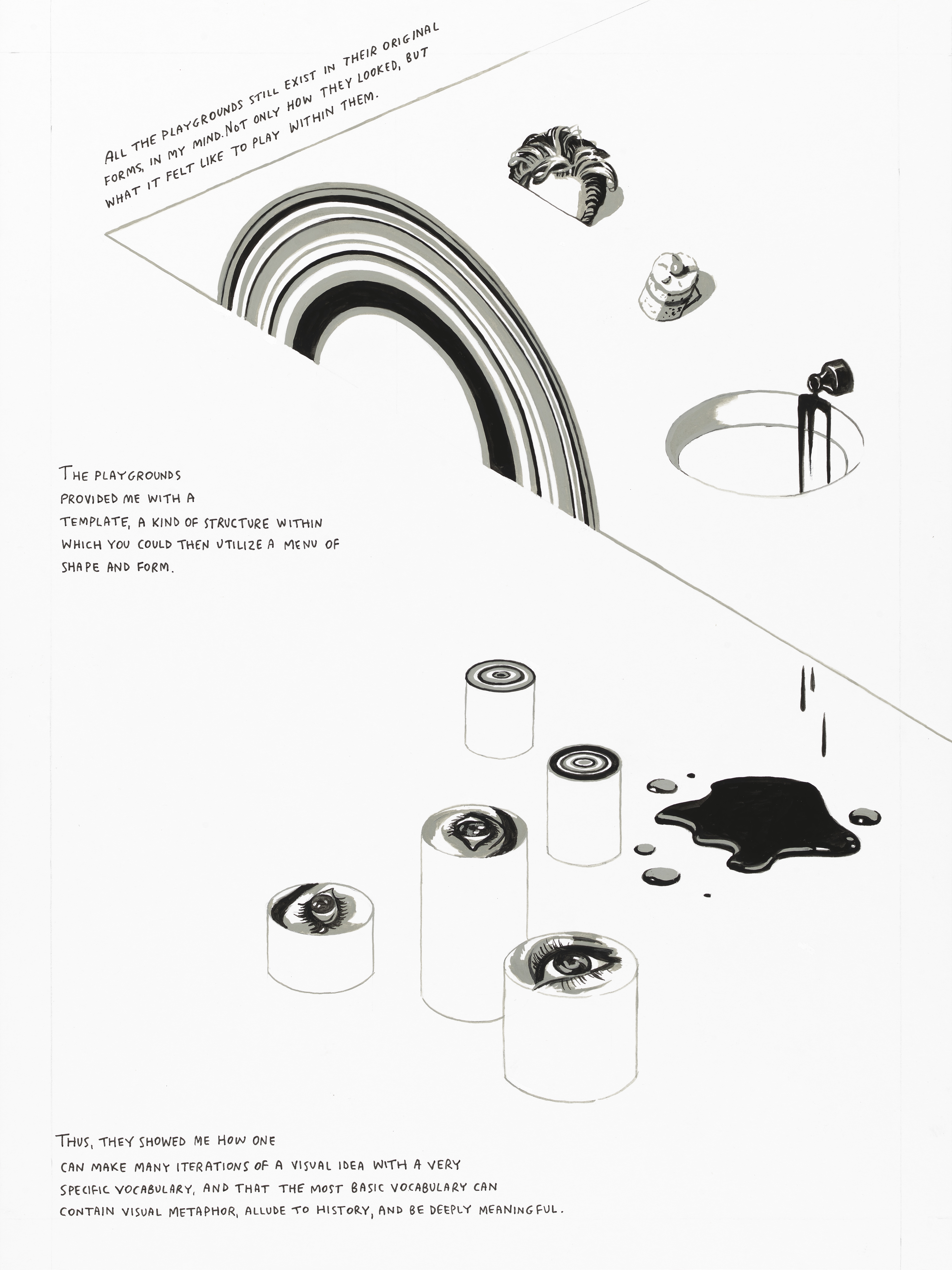Tag: pemplaytime
Just one month until PlayTime opens at @peabodyessex! What’s your take on the MANIFESTO? Tell us: how are you reinventing the rules in the new year? #pemplaytime
The fun is pouring in! Assistant curator Lydia Gordon (@lydslovesart_) shares details on the shiny new board game that arrived from PlayTime contributor and game designer Nashra Balagamwala. What new board games are you playing? #Repost @lydslovesart_ with @get_repost ・・・ Thank you @nashrabalagamwala for sending us a copy of “Arranged!” a board game that offers participants an opportunity to confront the struggles of an arranged marriage. An incredibly beautiful object in and of itself, the game and its quick witty tone negotiates play with a very real issue. Arranged marriage remains prevalent in many South-Asian societies. #pemplaytime @pemplaytime @peabodyessex
Board Gaming the System: A Comic Series
For this month’s Board Gaming the System comic, Adam Bessie and Jason Novak draw a new set of cards for Parker Brothers Sorry!
“PIETY, HONESTY, TEMPERANCE, GRATITUDE, PRUDENCE, TRUTH, CHASTITY, SINCERITY”—these were the only ways to advance to a Puritan Heaven of The Mansion of Happiness, the template upon which game of Sorry! was later created by Parker Brothers of Salem, MA. The Mansion of Happiness—widely considered the first mass-produced board game, published in 1843 (also in Salem)—popularized the use of “track” gameplay with which we are all familiar, and which Sorry! is built around. In track games, a single, rigid path takes players toward the final destination: progress is determined not by virtue, but by the luck of the draw, and strategy with the cards you’re dealt (which in Sorry! means trying to knock your opponents off track). What cards are we being dealt in the new year?


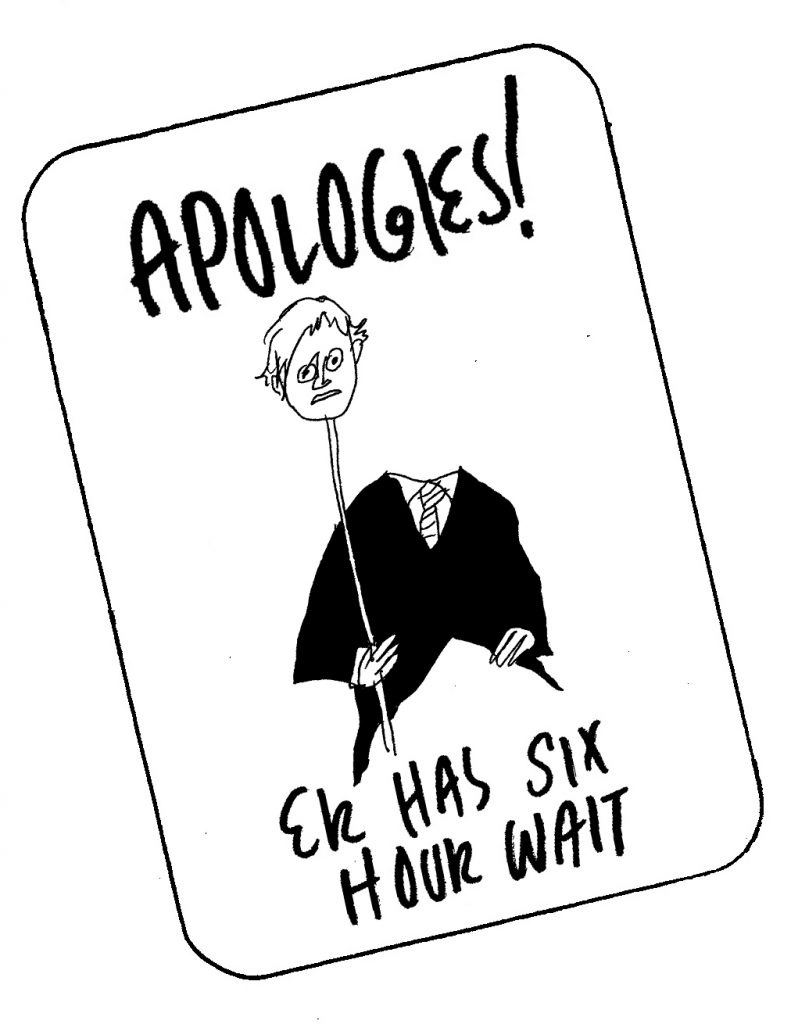
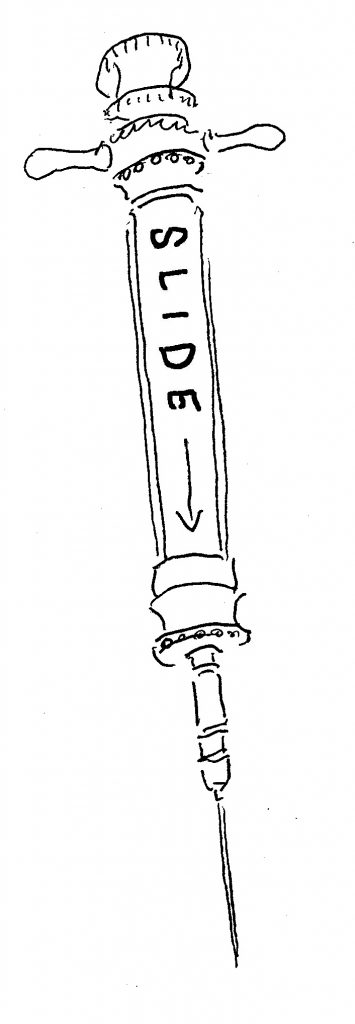
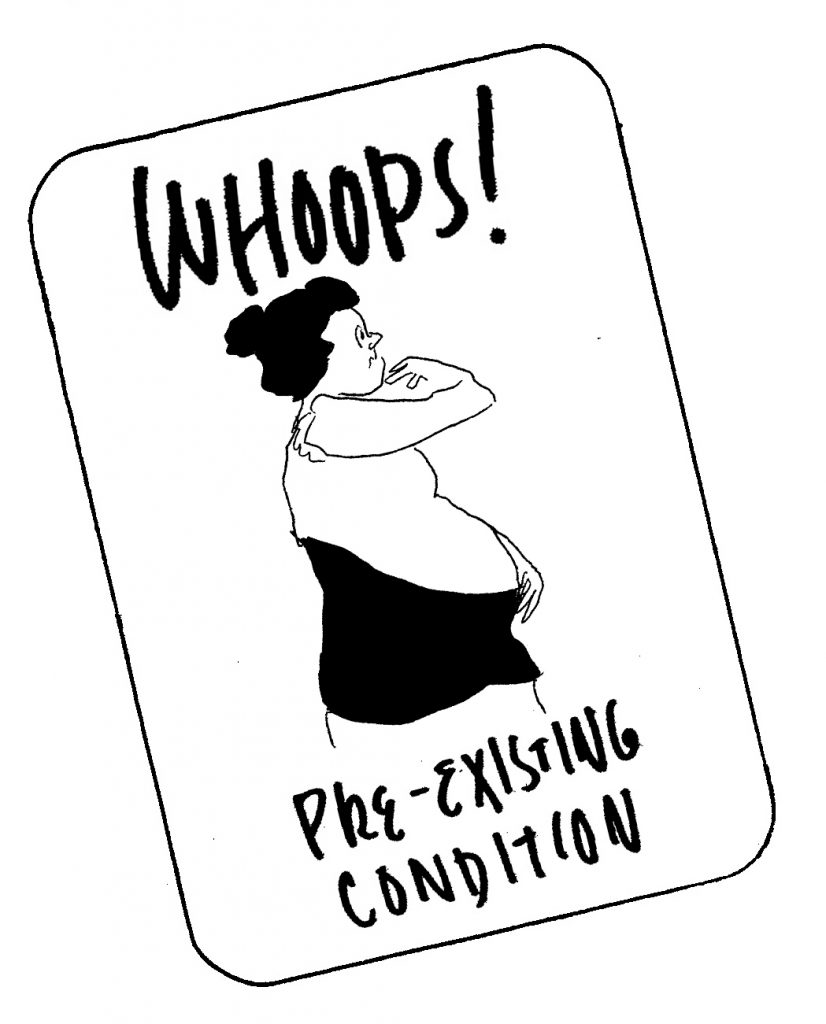
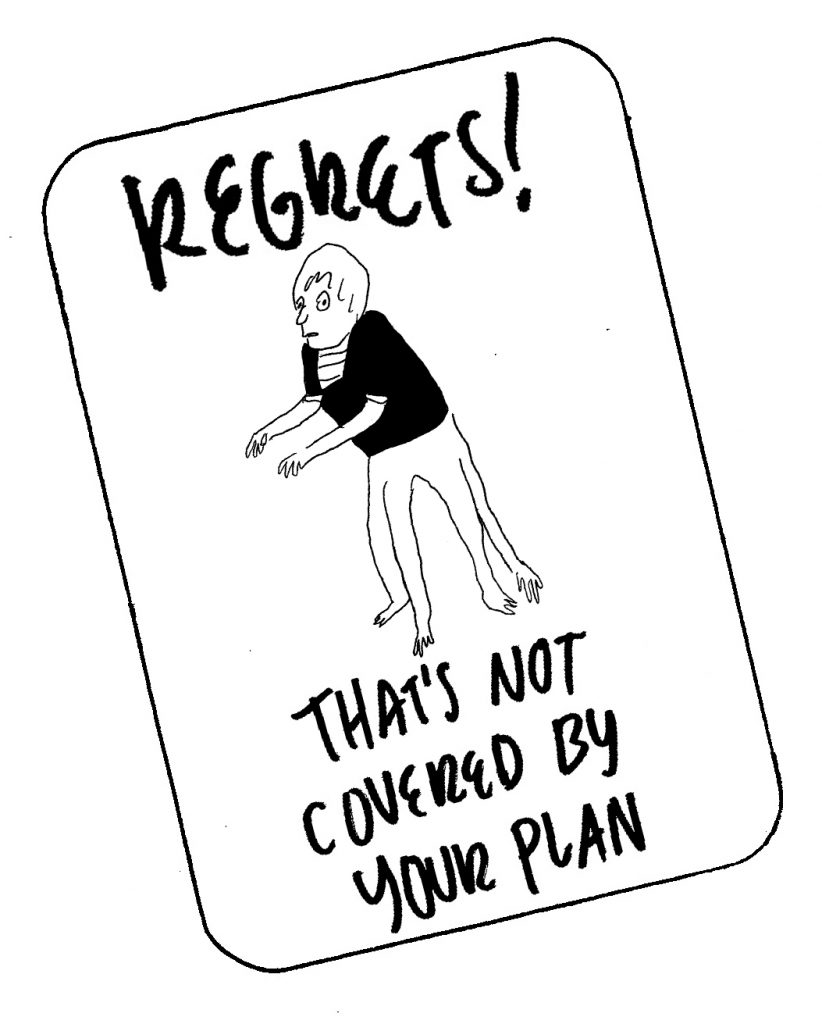
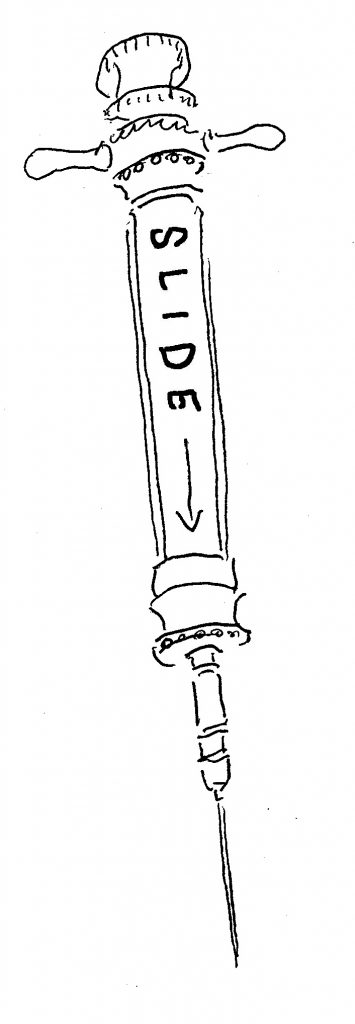
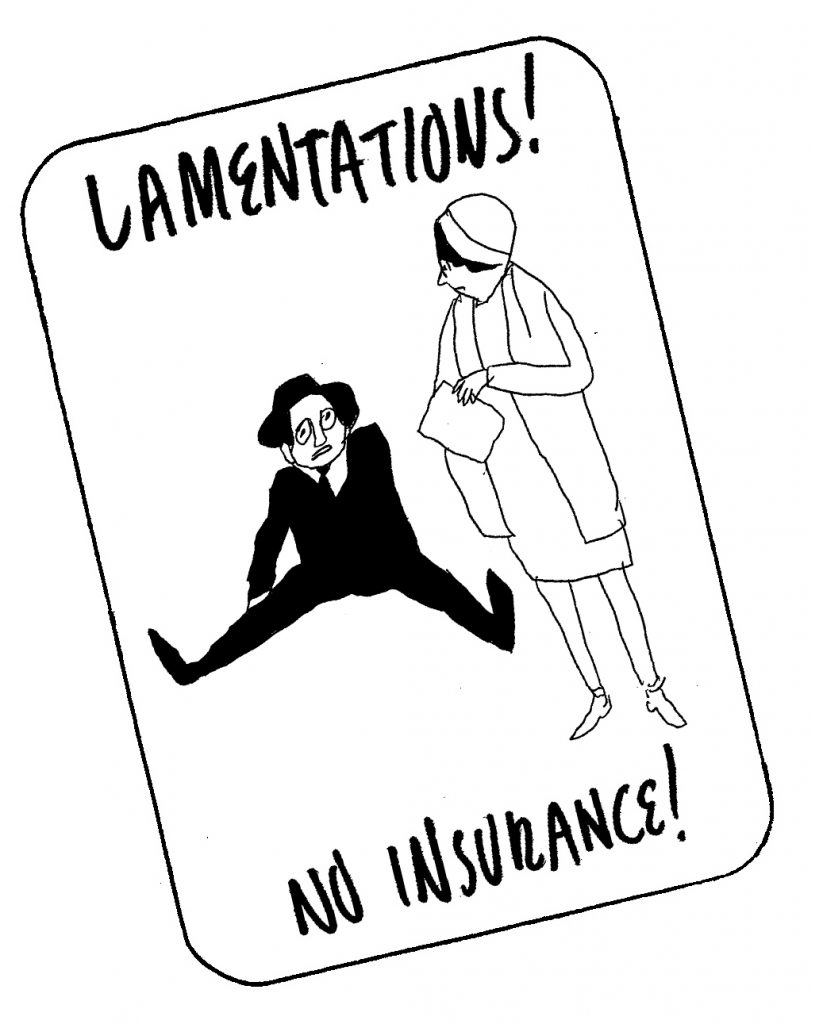
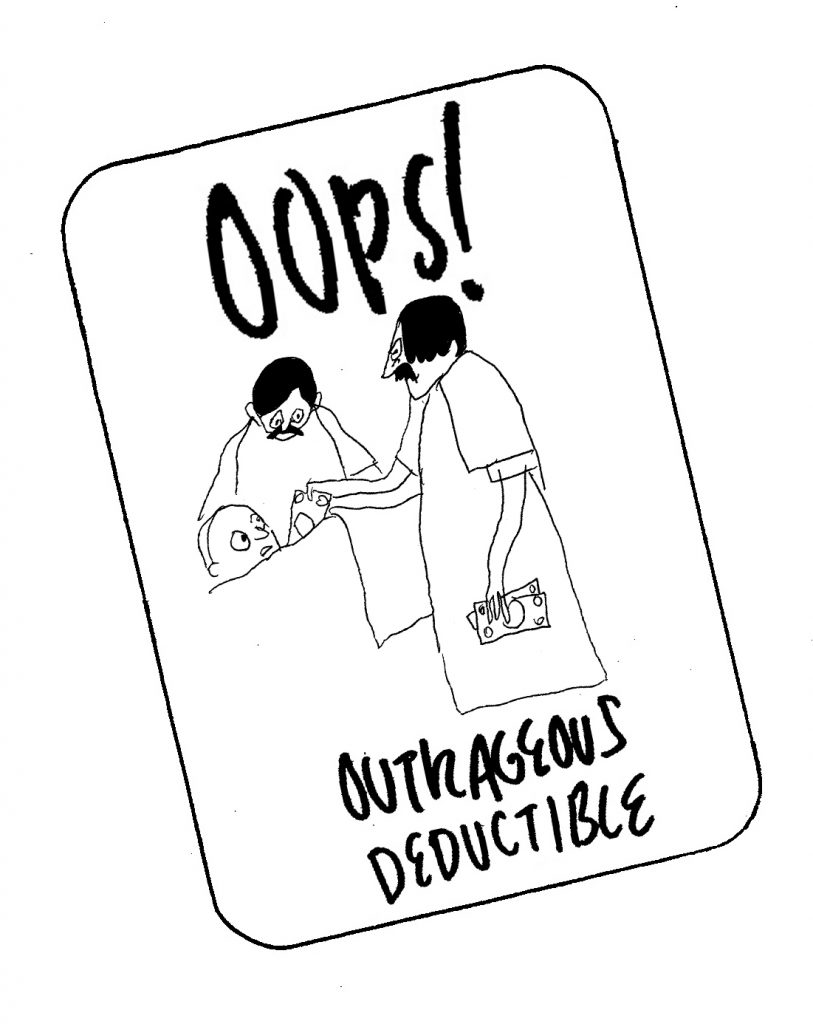
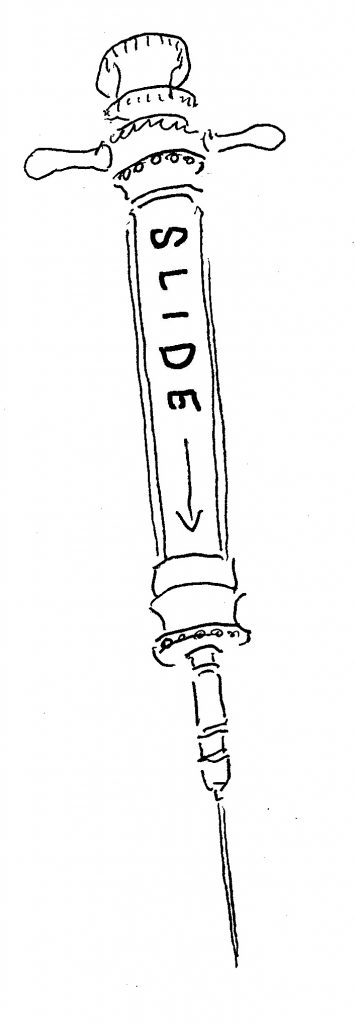

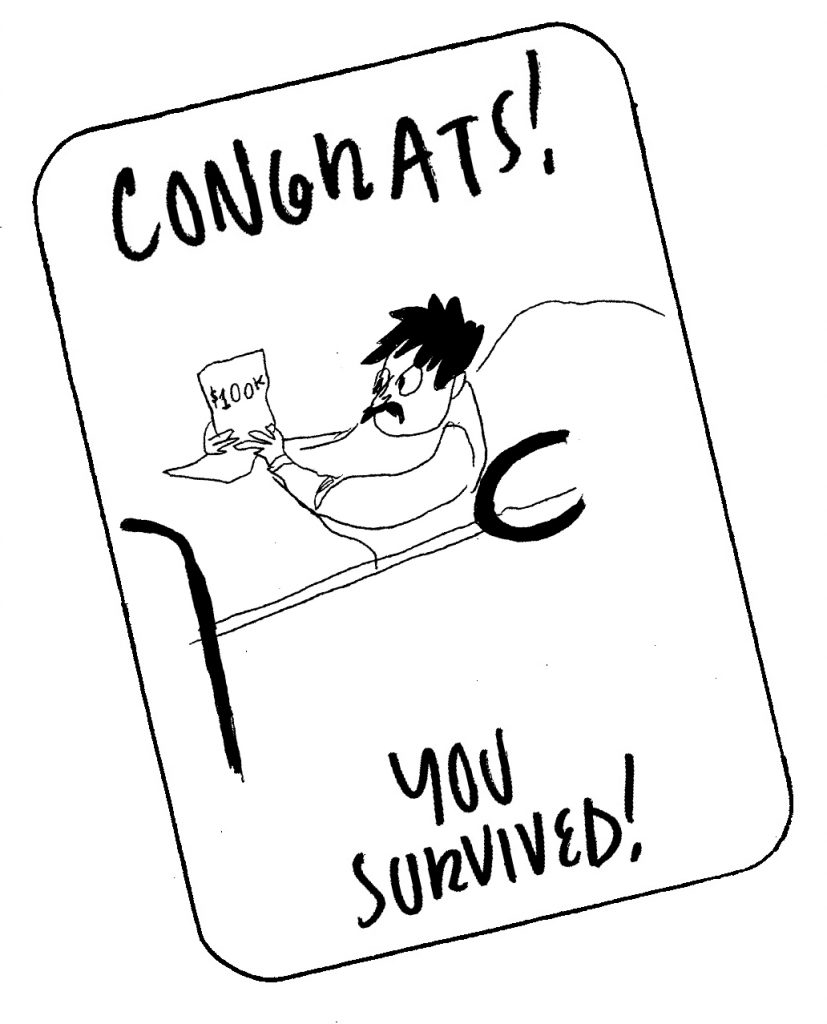
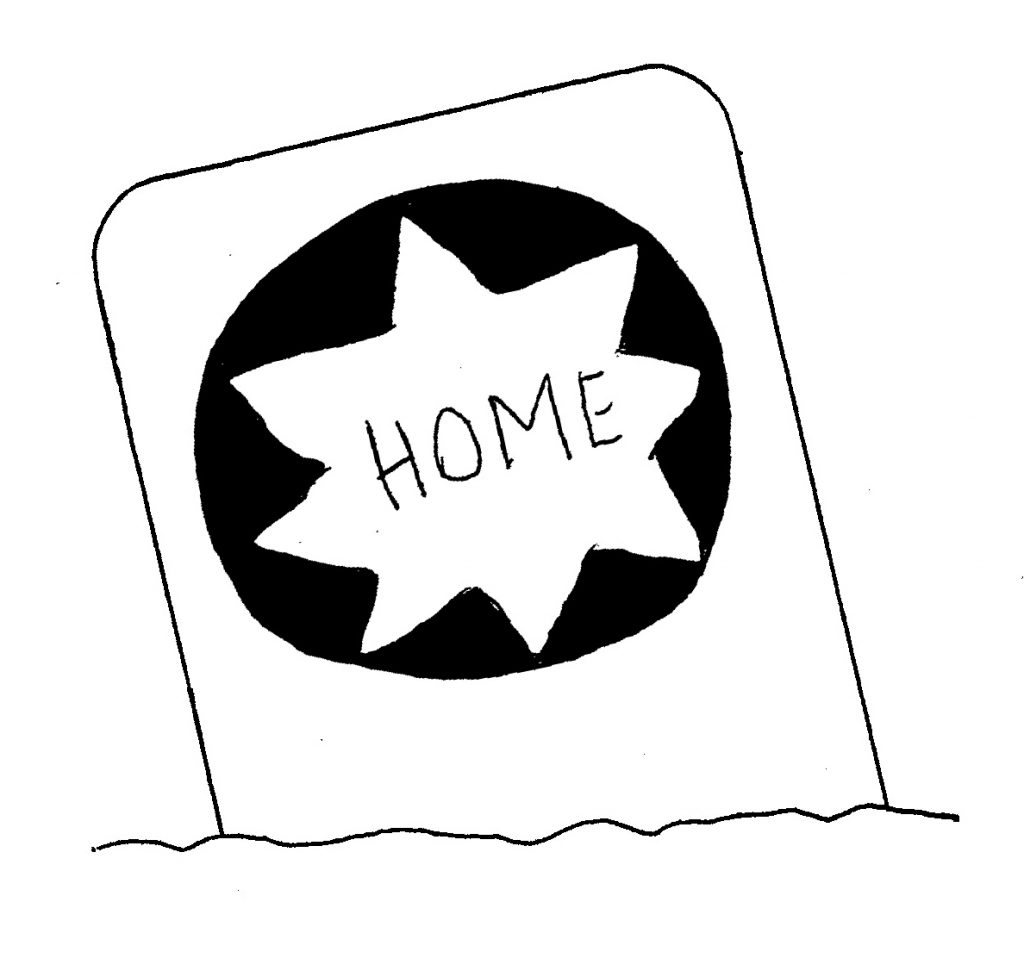
Come back for next month’s installment in the Board Gaming the System comic series. Missed the last one? Check it out here.
A behind-the-scenes look at conservation work for PlayTime from curator Trevor Smith. A detail of the reverse side of Agustina Woodgate’s work Royal, 2010, stuffed animal toy skins, Collection of Alan Kluger and Amy Dean. #Repost @presenttense99 ・・・ NowHere (care bears) When work is lent to @peabodyessex or another museum we have a duty of care to ensure that the work is returned to the owner in the same condition we received it. Sometimes, as is the case with the “rugs” made from eviscerated teddy bears that Agustina Woodgate (@lawoodgate) is showing in @pemplaytime the conservation team need to consider how the work is to be hung. Sewing reversible fabric tabs onto the hanging edge ensures that the work will not be unduly distorted or torn by its own weight when it is hung from clips. #pemplaytime #peabodyessexmuseum
A glimpse of historic East India Marine Hall from Lydia Gordon (@lydslovesart_), Assistant Curator for Exhibitions and Research. A new wall goes in! PlayTime is set to enchant the space. #pemplaytime #installgram
PlayTime curator Trevor Smith (@presenttense99) offers a first peek behind the scenes as exhibition installation begins at @peabodyessex—follow along for the latest! #pemplaytime #installation
Playground of My Mind: A Memoir
Playground of My Mind: A Memoir
In the next-to-last installment of her visual memoir about playgrounds, artist Julia Jacquette reveals how the play spaces of our youth impact the shape of our lives. Need to catch up? Start over here.
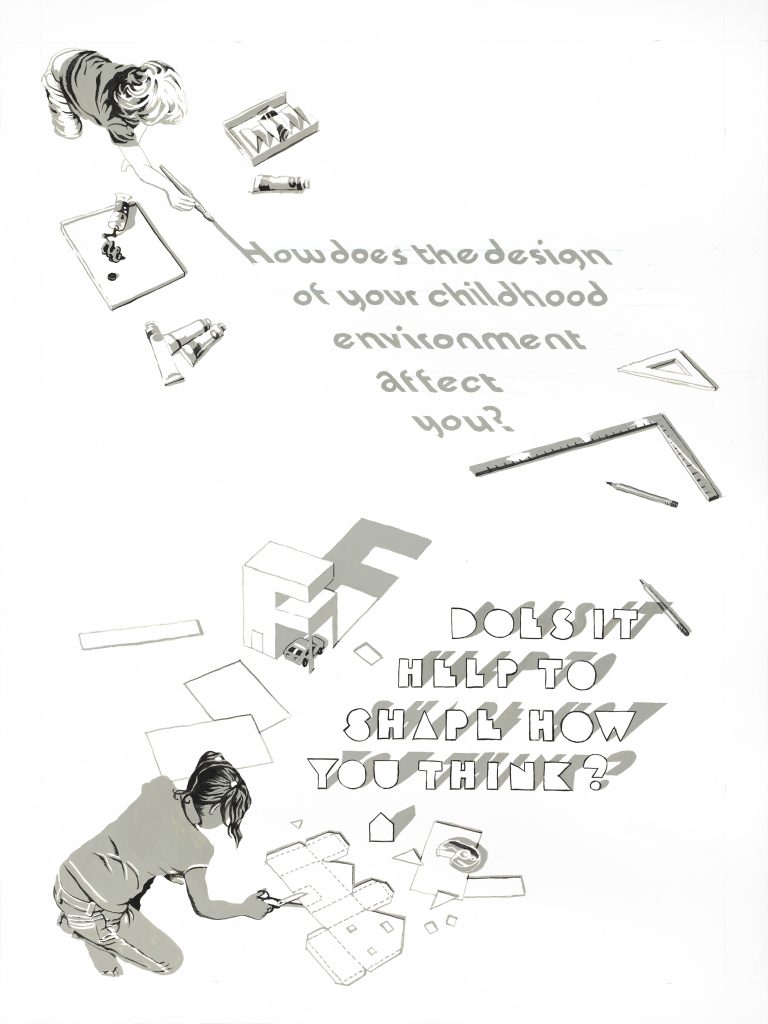
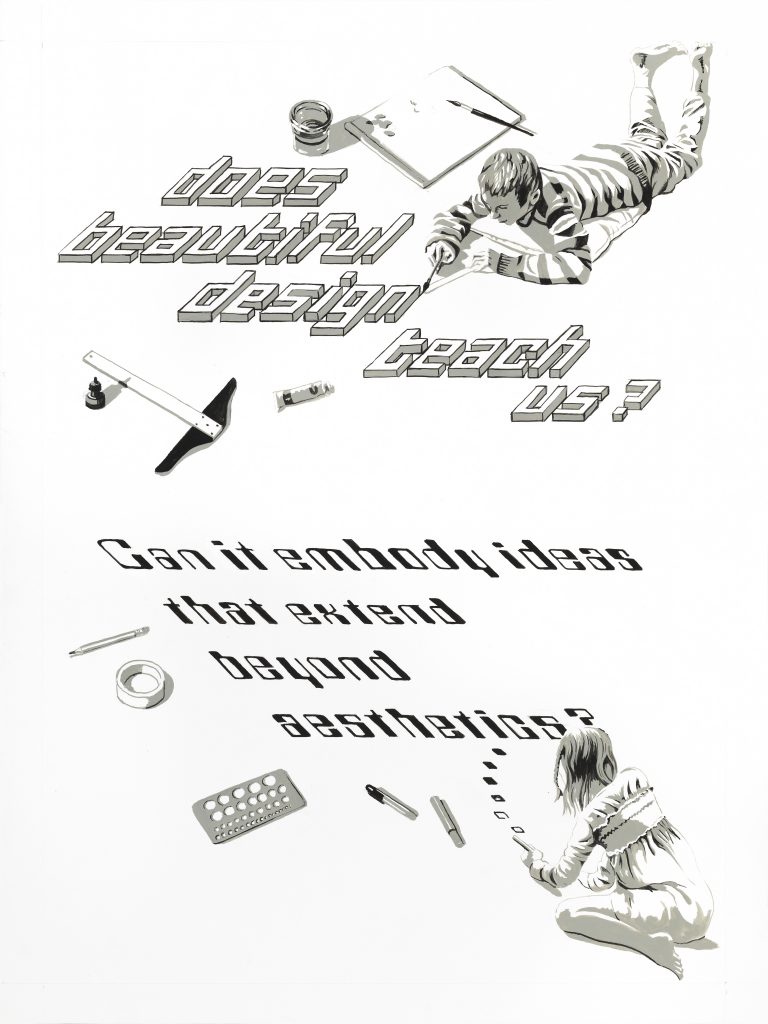


The final installment of Playground of My Mind will appear next week.
Disarm: An Interview
“To make a guitar or to make a violin or to make a drum set we were working very much like cavemen. You know blowing and scratching and banging these pieces of metal, trying to figure out how to make sound with them.”
Artist Pedro Reyes talks about the collaborative effort to produce Disarm Mechanized II (2013). This work, which will be shown as part of the PlayTime exhibition, features musical instruments created out of discarded weapons. When constructing Disarm, Reyes invited musicians to help him design and build the instruments and to compose the music they play in the gallery.
Read the transcript.
Board Gaming the System: A Comic Series
This month, comic duo Adam Bessie and Jason Novak offer us a new spin on the Milton Bradley Company classic The Game of Life.
The Game of Life has always reflected the times, even at the start of its own life, a year before the Civil War. Known first as The Checkered Game Life, Milton Bradley’s seminal game was really just checkers with spots which reflected the values, hopes, and worries of the era: Intemperance, Idleness, Speculation, Ruin, Honor, Suicide, and Happy Old Age (50). Since 1860, every generation has updated Life as a mirror—not of what life actually is, but of what the dominant wisdom tells us it should be. And just what should today’s The Game of Life be?
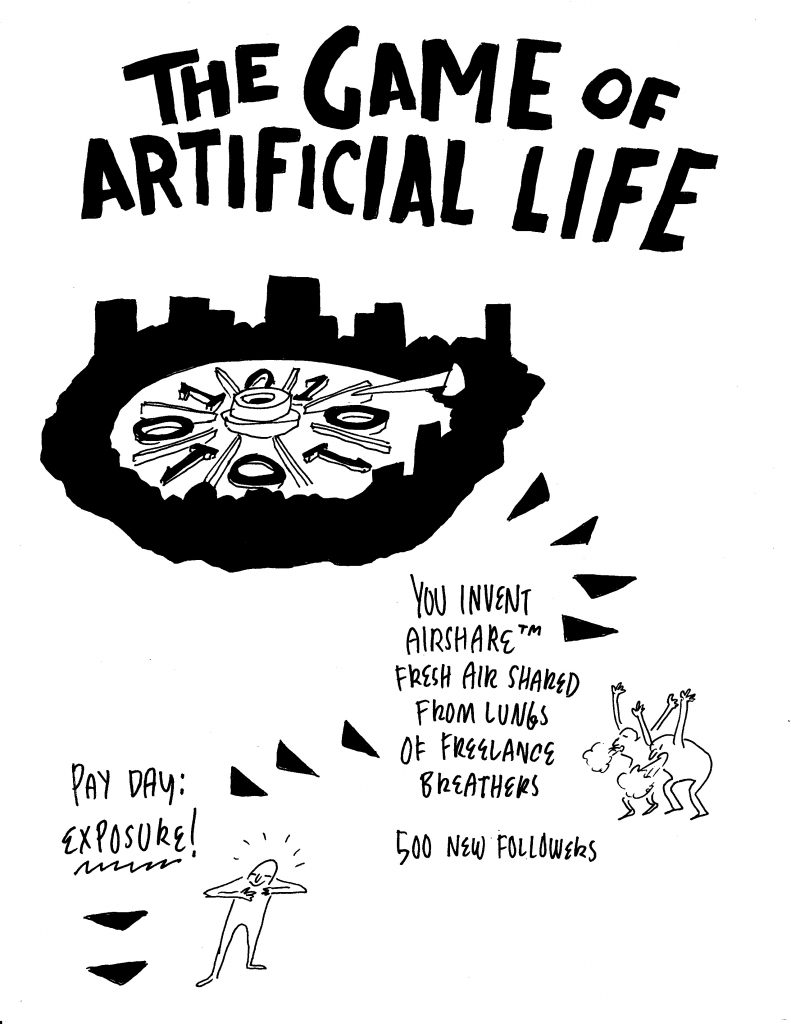
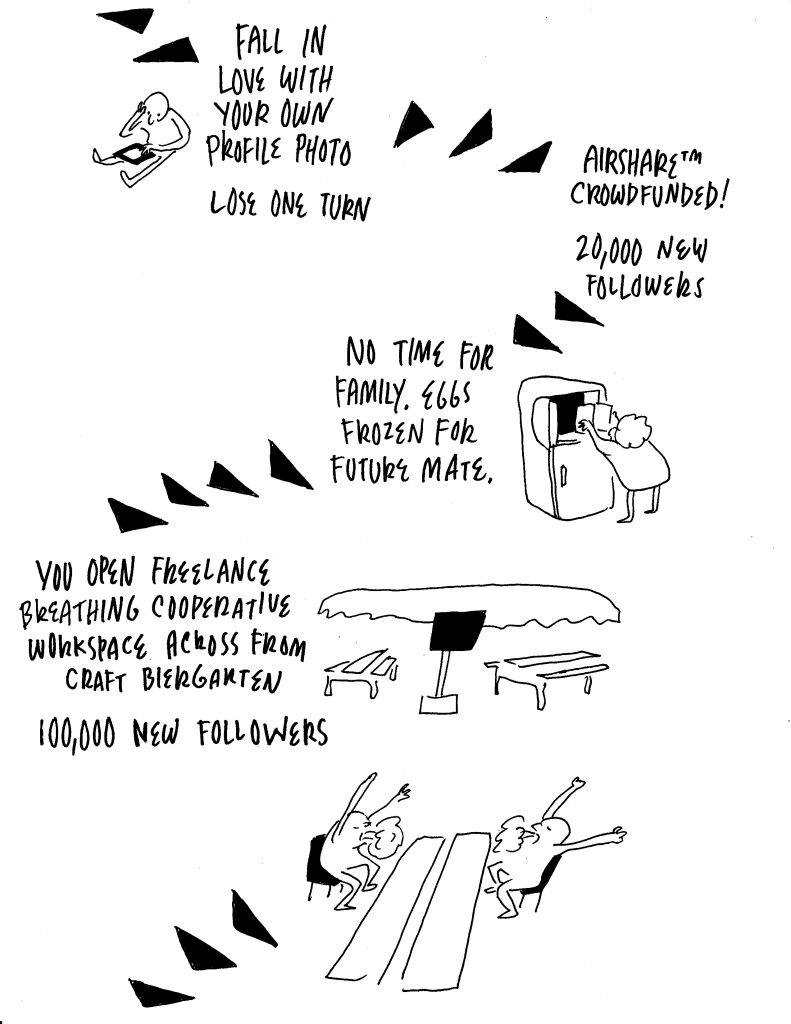

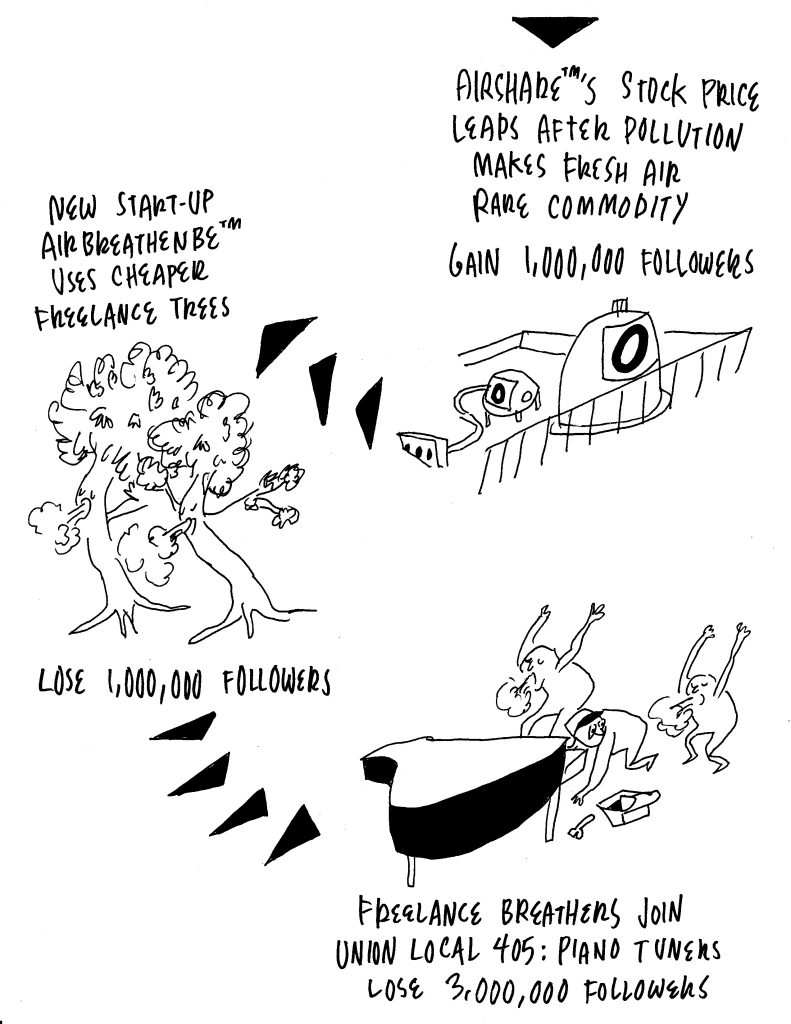
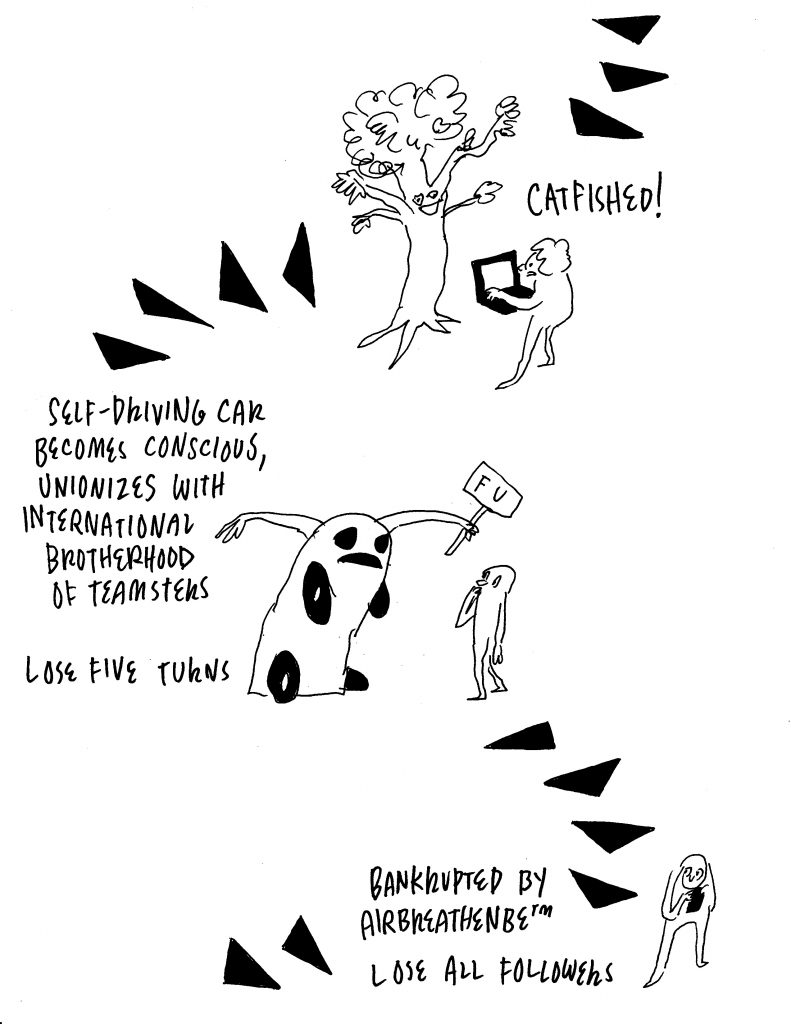
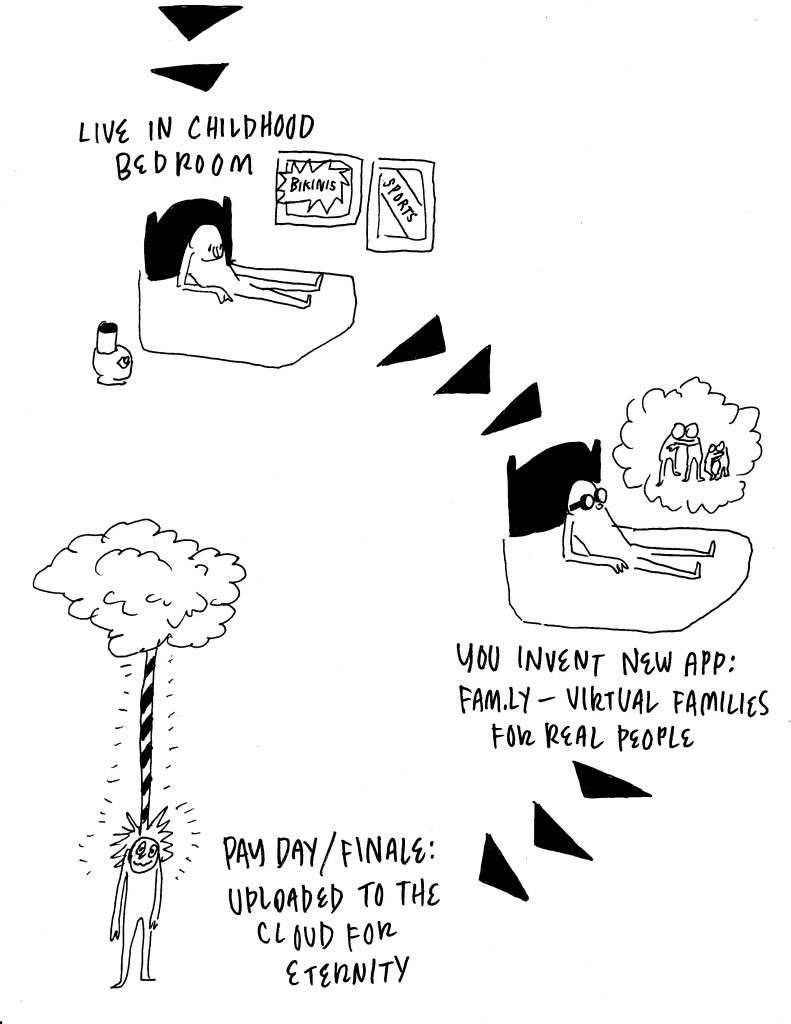
Come back for next month’s installment in the Board Gaming the System comic series. Missed the last one? Check it out here.
Constellation: An Avatar
In December’s video from artist Juliana Horner, she transforms herself before our eyes using makeup and digital effects. This month, we find her persona, Claropsyche, known widely on Instagram, “summoning the highest quality cosmic pearl droplets by any means necessary.”
I feel that in the past, I would have opposed using an app like Photoshop to alter an image of myself. I would have tried to be true to myself, or what I believed to be true to myself. But was I not still ‘editing’ by being selective of the images I chose to share with others? Humanity will always edit; it is our definition of editing that will change over time.
I believe that more people will become comfortable with the idea of digitally editing themselves, unattached to the idea that their physical bodies should match the image they’ve made as technology progresses. Not only does it take much longer to alter the physical self rather versus the idea of self- there are limits. And regardless: is it not thoughts that plant the seed of reality? There would be no car without a preexisting idea of a thing that moves to take you from one place to the other, there would be no videogame without its creator’s fever dream . . . I welcome imagination with open arms. Unreal is real enough for me—better, even.

